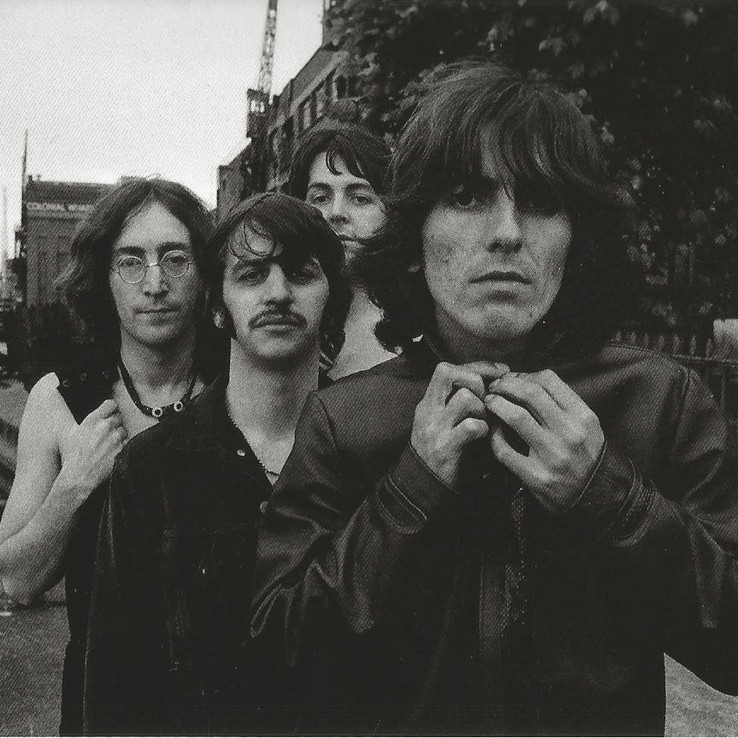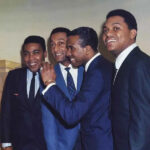The Beatles’ “Hey Jude” is more than just a song; it’s a cultural touchstone, a singalong classic, and a testament to the band’s songwriting genius. Released in 1968, amidst a backdrop of personal and band turmoil, “Hey Jude” emerged as a beacon of hope and resilience, quickly climbing the charts and embedding itself into the fabric of popular music history. This article delves deep into the story behind this iconic track, exploring its creation, musical innovation, and enduring legacy as a quintessential Jude Beatles Song.
 A jukebox, with the words
A jukebox, with the words
The Genesis of “Hey Jude”: From Sadness to Solace
The seeds of “Hey Jude” were sown in the emotional upheaval surrounding John Lennon’s separation from his first wife, Cynthia, and the impact this had on their young son, Julian. Paul McCartney, ever empathetic, felt for Julian amidst the family disruption. Driven by compassion, McCartney embarked on a drive to visit Cynthia and Julian, seeking to offer comfort during a difficult time. It was during this journey that the melody and initial lyrics of “Hey Jude” began to materialize.
Originally titled “Hey Jules,” McCartney’s initial intention was to reassure Julian, urging him not to be disheartened by his parents’ separation. The now-famous opening lines, “Hey Jules, don’t make it bad / Take a sad song and make it better,” were a direct message of encouragement to the young boy. As the song evolved, “Jules” transformed into “Jude,” a name that McCartney felt sang better and carried a more universal appeal.
 The Beatles in 1968
The Beatles in 1968
However, “Hey Jude” transcended its initial personal context, blossoming into a broader message of hope and resilience applicable to anyone facing adversity. While rooted in Lennon’s personal life, the song’s themes of finding solace in sadness and embracing positive change resonated universally, contributing to its widespread appeal and enduring relevance as a jude beatles song that speaks to the human condition.
Musical Innovation and Structure: A Song in Two Parts
“Hey Jude” stands out not only for its emotional depth but also for its innovative musical structure, particularly its extended coda. The song can be effectively divided into two distinct sections: the verses and choruses, and the lengthy “na-na-na” outro.
The first part of “Hey Jude” is characterized by its classic ballad structure. Built around McCartney’s piano chords, the song unfolds with verses offering words of encouragement and choruses providing a comforting affirmation. The instrumentation is relatively sparse in the beginning, featuring piano, acoustic guitar, and Ringo Starr’s understated drumming, allowing McCartney’s vocals and the song’s message to take center stage.
However, around the three-minute mark, “Hey Jude” takes a dramatic turn. The song transitions into its iconic coda, a section that accounts for a significant portion of its total length. This outro begins with a shift in tempo and dynamics, gradually building in intensity and instrumentation. The “na-na-na” refrain, simple yet profoundly effective, becomes the centerpiece, evolving from a gentle hum to a powerful, communal chant.
George Martin’s orchestral arrangement plays a crucial role in the coda’s dynamic build-up. He strategically introduces brass, strings, and other orchestral elements, layering them gradually to amplify the emotional crescendo. This orchestration, combined with the increasingly fervent vocals and handclaps, transforms the song from a personal ballad into an anthemic experience, inviting listeners to join in the collective catharsis. This masterful arrangement is a key element in what makes “Hey Jude” such a remarkable jude beatles song.
The Length Controversy and Radio Play
At over seven minutes long, “Hey Jude” was groundbreaking for its time, especially for a single intended for radio airplay. In an era when radio formats favored shorter tracks, George Martin initially expressed concerns about the song’s length, fearing it would deter radio stations from playing it. However, John Lennon famously retorted, “They will if it’s us,” demonstrating the band’s confidence in their music and their understanding of their cultural influence.
Lennon’s intuition proved correct. Despite its unconventional length, “Hey Jude” was embraced by radio stations worldwide. Its sheer quality, combined with the Beatles’ immense popularity, overcame any format limitations. The song’s length even became a talking point, adding to its mystique and making it an event whenever it aired. The success of “Hey Jude” paved the way for longer songs to gain mainstream acceptance, influencing radio programming and demonstrating that musical merit could transcend traditional time constraints, solidifying its status as a unique jude beatles song.
Lyrical Depth and Interpretation: Beyond the Surface
While seemingly simple on the surface, the lyrics of “Hey Jude” offer layers of interpretation and emotional resonance. The opening verses directly address someone experiencing sadness, offering encouragement to persevere and find positivity (“don’t make it bad,” “take a sad song and make it better”).
The chorus, with its repeated affirmation, “Hey Jude, don’t be afraid,” serves as a powerful mantra against fear and doubt. The lines “You were made to go out and get her / The minute you let her under your skin / Then you begin to make it better” suggest embracing love and connection as pathways to healing and improvement.
The somewhat enigmatic line, “The movement you need is on your shoulder,” initially questioned by McCartney himself, became a point of fascination and debate. Lennon championed the line, appreciating its ambiguous yet evocative nature. Interpretations range from literal physical movement to metaphorical shifts in perspective or burden-lifting, highlighting the song’s ability to resonate on multiple levels and inviting personal connection from each listener. This lyrical ambiguity and depth contribute to the timeless appeal of this jude beatles song.
Cultural Impact and Enduring Legacy
“Hey Jude” was released on August 26, 1968, and quickly became a global phenomenon. It topped charts in numerous countries, including a remarkable nine-week run at number one in the United States, a record at the time. It became the best-selling single of 1968 in the US, UK, and several other major markets, solidifying its place as one of the Beatles’ most commercially successful and culturally significant songs.
Beyond its chart success, “Hey Jude” permeated popular culture in countless ways. It became a staple at concerts, sporting events, and gatherings of all kinds, its “na-na-na” coda transforming into a universal singalong. The song has been covered by countless artists across genres, further testament to its versatility and enduring appeal.
“Hey Jude” remains a cornerstone of the Beatles’ discography and a defining song of the 1960s. Its message of hope, its innovative musical structure, and its sheer emotional power continue to resonate with audiences across generations, ensuring its place as a timeless anthem and an unforgettable jude beatles song.
In conclusion, “Hey Jude” is a masterpiece of songwriting and performance. From its poignant origins to its anthemic conclusion, the song captures a range of emotions and experiences that continue to touch listeners worldwide. It exemplifies the Beatles’ musical genius, their ability to innovate, and their profound connection with their audience. “Hey Jude” is not just a song; it’s an experience, a moment of shared humanity, and a testament to the power of music to heal and uplift, forever cemented as a landmark jude beatles song.
Resources
- The Complete Beatles Chronicle by Mark Lewisohn
- All The Songs: The Stories Behind Every Beatles Release by Jean-Michel Guesdon
- And The Band Begins To Play: The Definitive Guide To The Songs of The Beatles by Steve Lambley
- Revolution in the Head by Ian MacDonald
- The Beatles Anthology
- Many Years From Now by Barry Miles
- Here, There, and Everywhere: My Life Recording the Music of the Beatles by Geoff Emerick and Howard Massey
- The Beatles: The Stories Behind the Songs 1967-1970 by Steve Turner
- Philip Norman’s biographies of John Lennon, George Harrison, and Paul McCartney
- Graeme Thomson’s biography of George Harrison
- Take a Sad Song by James Campion
- Sound Pictures by Kenneth Womack

